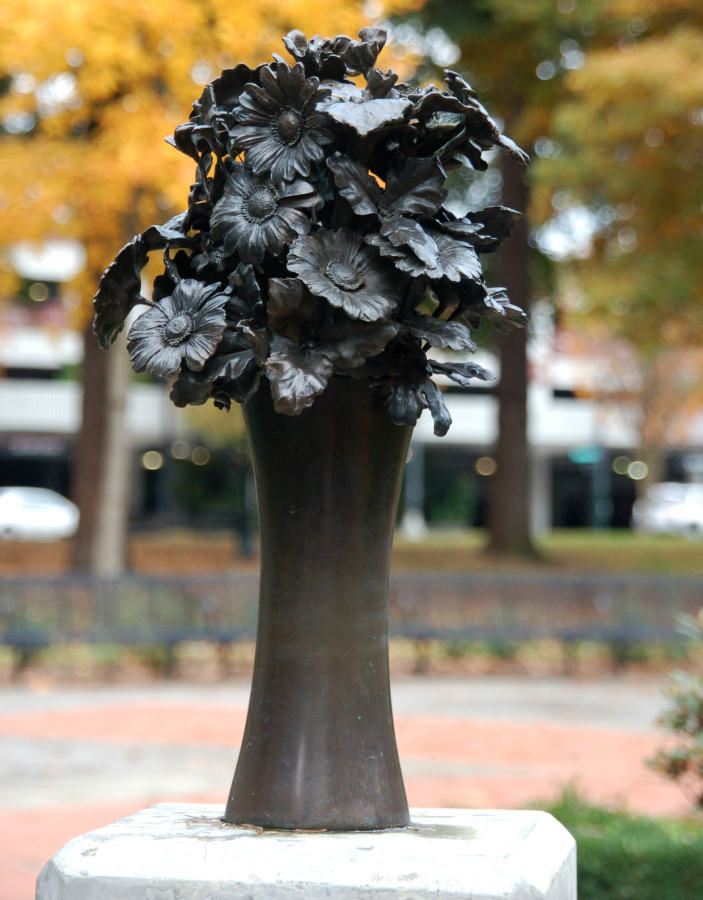Click here for a trip to City Daily Photo, transporting you around the world every day.

Wearing a quilted black satin brimmed hat, my multi-colored polka-dotted black rubber boots, and with my thigh-length raincoat completely zipped up and the hood pulled up over my hat, I boarded this 20 bus Sunday, September 29, at 12:49 p.m. on my way to a fundraiser tour for the Architectural Heritage Center. I had my Nikon secreted inside the upper left side of my raincoat and my over-the-shoulder black, rain repellant, many-pocketed handbag hanging outside my raincoat on the right side. I left my backpack at home because I had no idea how much turn-around space I would have on the tour. I certainly didn't want to knock anything off of someone's table or wall.
Seeing folks dressed in coats or hoodies, some with their belongings wrapped in plastic bags, didn't surprise me. All of us knew that it had been raining and blowing for hours and hours and would continue to do so.
On my way home after the tour, the 20 bus filled with thoroughly wet Portland Timbers' soccer fans who gave no clue as to the outcome of the game. It wasn't until I got home and checked Facebook that I learned the team had beat the LA Galaxy 1-0. And that 20,000 filled the stadium in the rain. Guess those who managed to quickly fill the 20 bus felt too water-logged to be excited about the victory. The hordes left on the sidewalks waited for the next bus in the downpour.


















































